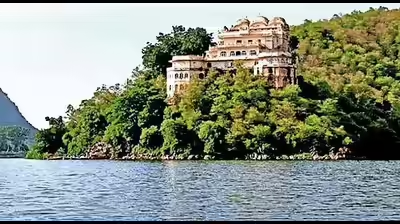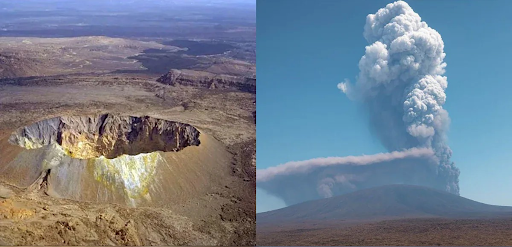




Source: WORDPRESS
Disclaimer: Copyright infringement not intended.
The sudden eruption of Costa Rica Poás volcano sent a towering 3 km high ash plume into sky disrupting tourism & prompting geohazard alerts across region.
|
Feature |
Details |
|
Type |
Stratovolcano (Composite) |
|
Location |
Alajuela Province, Central Costa Rica |
|
Protected Area |
Poás Volcano National Park |
|
Elevation |
2,708 meters above sea level |
|
Crater Characteristics |
~1.5 km wide, ~300 meters deep; among largest active craters globally |
|
Volcanic Structure |
Irregular composite with multiple eruptive centers; includes several large collapse craters |
|
Basal Area |
~400 sq. km |
|
Volcanic Activity |
One of most active in Costa Rica; episodes of ash, gas & phreatic eruptions |
|
Gas Emissions |
SO₂ & acidic gases cause acid rain & ecosystem damage (notable since 1989) |
|
Crater Lake |
Known as Laguna Caliente; highly acidic, drying up as of 2024, increasing eruption frequency |
|
Eruption History |
Frequent activity with major events in 1910, 1953, 2017 & minor eruptions continuing into 2025 |
|
Recent Activity (2024–2025) |
Crater lake drying, strong sulfurous emissions, ash columns up to 3 km, rock ejections |
|
Impact on Ecosystem |
Acid rain affects highland flora, mosses & agricultural crops |
|
Tourism Impact |
A popular destination with restricted access during high volcanic activity |
|
Volcano |
Elevation (m) |
Type |
Last Known Activity |
Notable Features |
|
Poás |
2,708 |
Stratovolcano |
2025 |
Large crater, acid lake, high gas emissions |
|
Arenal |
1,670 |
Stratovolcano |
Dormant since 2010 |
Previously most active; iconic symmetrical cone |
|
Irazú |
3,432 |
Stratovolcano |
Active |
Highest active volcano in Costa Rica; crater lake |
|
Turrialba |
3,340 |
Stratovolcano |
Ongoing |
Recent gas-rich eruptions affecting San José airport |
|
Rincón de la Vieja |
1,916 |
Complex volcano |
Active |
Hydrothermal activity, crater lake, frequent phreatic eruptions |
|
Barva |
2,906 |
Stratovolcano |
Dormant |
Covered in cloud forest; part of Braulio Carrillo National Park |
|
Tenorio |
1,916 |
Stratovolcano |
Dormant |
Famous for Río Celeste’s turquoise waters from volcanic minerals |
|
Aspect |
Details |
|
Tectonic Plate Setting |
Costa Rica lies at convergent boundary where Cocos Plate subducts beneath Caribbean Plate along Middle America Trench. |
|
Subduction Characteristics |
Angle Moderate-angle subduction. |
|
Volcanic Arc |
Costa Rica is part of Central American Volcanic Arc (CAVA) formed by consistent subduction-related volcanism. |
|
Volcano Type |
Stratovolcanoes (Composite volcanoes) tall, conical with alternating layers of lava, ash & pyroclastics. |
|
Structure (Poás) |
Irregular, complex stratovolcano. |
|
Volcanic Activity |
Explosive eruptions due to high viscosity magma & gas content. |
|
Recent Activity (Poás) |
Increasing gas emissions, crater lake drying (2024–2025). |
|
Environmental Effects |
Acid rain from sulfur emissions. Damage to forest, crops & national parks. |
|
Hazard Monitoring |
Monitored by OVSICORI (Volcanological & Seismological Observatory of Costa Rica) using seismic, gas & thermal sensors. |
|
Disaster Risk |
High due to proximity to population centers, high tourist footfall, acid lake hazard & frequent eruptive episodes. |
For more such articles, please refer to IAS GYAN
Sources: MSN
|
PRACTICE QUESTION Q.Costa Rica’s volcanic geography offers both opportunities & challenges to its sustainable development. Discuss geological factors that make Costa Rica volcanically active. |






© 2025 iasgyan. All right reserved